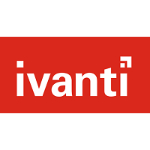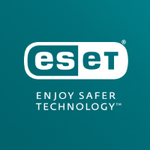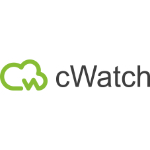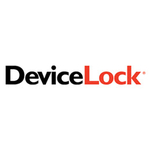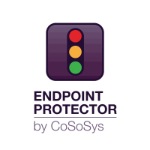List of Best Device Control Software
Showing 10 of 10 products
ManageEngine Device Control Plus
Device Control Software for SMEs
ManageEngine Device Control Plus is comprehensive data leakage prevention solution giving IT administrators full control over USB and peripheral devices by enabling them to control, block and monitor all removable devices connected to endpoints, all...Read ManageEngine Device Control Plus Reviews
Ivanti is a leading software company known for providing innovative solutions to streamline and simplify IT operations. With a commitment to enhancing productivity and reducing costs, Ivanti offers a range of products that address critical business n...Read Ivanti Reviews
CrowdStrike Falcon is a solution for modern-day cybersecurity threats. With its advanced technology and unmatched capabilities, Falcon is changing the game for businesses looking to protect their valuable data from malicious attacks. Say goodbye to t...Read CrowdStrike Falcon Reviews
ESET Endpoint Security is a software system designed to protect your companys devices and network from potential cyber threats. With its advanced features and customizable options, ESET ensures top-tier security for your business. Dont take any chanc...Read ESET Endpoint Security Reviews
Comodo cWatch, a powerful cybersecurity solution designed to protect your business from online threats. With advanced monitoring and remediation capabilities, cWatch provides real-time protection against malware, DDoS attacks, and other cyber threats...Read Comodo cWatch Reviews
VIPRE Endpoint Security is a software designed to protect your business from the ever-evolving cyber threats. With its advanced threat detection and real-time protection capabilities, VIPRE ensures that your network and devices are constantly safegua...Read VIPRE Endpoint Security Reviews
DeviceLock is a leading software solution designed to enhance data security and protect against insider threats in organizations of all sizes. With its advanced features and user-friendly interface, DeviceLock empowers businesses to control device an...Read DeviceLock Reviews
Greenway Health is a leading healthcare technology company, dedicated to creating innovative solutions that improve patient care and provider efficiency. With a wealth of experience and a commitment to constant innovation, Greenway Health is at the f...Read Greenway Health Reviews
SolarWinds Threat Monitor, the all-in-one solution for monitoring and managing network security. With its advanced features and user-friendly interface, Threat Monitor offers businesses of all sizes a powerful tool to easily identify and respond to p...Read SolarWinds Threat Monitor Reviews
Netwrix Endpoint Protector, a powerful security solution designed to protect your organizations sensitive data and prevent data breaches. With its advanced features and customizable controls, Endpoint Protector offers peace of mind and ensures compli...Read Netwrix Endpoint Protector Reviews
- What Is Device Control Software?
- Top Reasons Why Businesses Need Device Control Software?
- What Are the Top Key Features of Device Control Software?
- What Are the Top Benefits of Device Control Software?
- What Are the Steps to Choose the Right Device Control Software?
- What Are the Types of Device Control Software for Different Industries?
- What Are the Technology Trends for Best Device Control Software?
- What Are the Deployment Options for Device Control Software?
What Is Device Control Software?
Device control software refers to a specific category of applications or programs that are employed for the purpose of overseeing, regulating, and administering all interconnected devices within a network.
The utilization of this measure serves to guarantee that gadgets are employed in accordance with their intended purposes, hence providing heightened security against potential threats posed by hostile individuals. Device control software functions by imposing limitations and granting permissions for specific actions on a computer or electronic device.
Network access control (NAC) has the capability to restrict the connection of specific devices to a network, regulate their activities, and determine their access privileges to files. Additionally, it has the capability to limit the connection or execution of specific processes by external devices.
The significance of this software lies in its ability to mitigate the risk of unauthorized individuals gaining access to networks and systems. The technology possesses the capability to effectively oversee and record all data transmissions occurring within a given system, hence impeding any potentially harmful or malevolent operations.
Additionally, it can serve the purpose of deterring users from engaging in imprudent or unauthorized activities, such as establishing connections with external hard drives or downloading files that are contaminated with viruses.
In summary, best device control software plays a crucial role in safeguarding networks and systems against hostile intrusion or illegal actions. The system has the capability to monitor, record, and obstruct potentially suspicious activities, safeguard against unauthorized disclosure of data, and enhance the overall security of the network.
Top Reasons Why Businesses Need Device Control Software?
1. Restrict and control access to devices: Device control software allows businesses to effectively manage and regulate access to authorized or trusted devices, while simultaneously preventing access from unknown or potentially harmful devices.
2. Secure confidential data: Router control software is implemented by enterprises to mitigate the risk of data loss resulting from the usage of insecure devices. This software functions by imposing restrictions on the access to secret data.
3. Stop malware attacks: Router control software for PCs plays a crucial role in mitigating the risk of malware assaults originating from malevolent devices by implementing measures such as access denial or blocking illegal devices.
4. Enhance network security: The utilization of device control software contributes to the augmentation of network security through the implementation of restrictions and controls on devices that are connected to the corporate network.
5. Mitigate network risks: Top device control software allows businesses to effectively manage and reduce the potential dangers that may arise from the connection of external devices to their networks.
6. Improve internal security: The utilization of device access control software organizations to enhance their internal network security through the monitoring and regulation of device usage.
7. Protect endpoint devices: Best device control software plays a crucial role in safeguarding endpoint devices, including laptops, desktops, and other mobile devices, against malicious intrusions.
8. Restrict access to files and folders: Device access control software facilitates the implementation of access restrictions on specific files and folders that are kept on external devices, thereby empowering enterprises to exercise control over such access.
9. Maintain data integrity: Device access control software plays a crucial role in safeguarding the integrity of data stored on both internal and external devices by effectively preventing illegal access.
10. Eliminate rogue devices: The utilization of device access control software facilitates the identification and subsequent elimination of unauthorized devices within the corporate network.
11. Control device usage: This software facilitates the management of external devices and the enforcement of usage regulations within enterprises.
12. Enforce security policies: It plays a crucial role in assisting businesses in the enforcement of their security policies and the maintenance of compliance with pertinent requirements.
13. Automate security processes: The utilization of device control software facilitates the automation of security operations, hence enhancing the ease and efficiency with which enterprises can safeguard their data.
14. Monitor usage activity: Device control software is utilized by enterprises to effectively monitor the usage activities of devices that are linked to their networks.
15. Reduce costs: Router control software is a valuable tool for businesses as it facilitates cost reduction through the provision of centralized control and administration of devices.
What Are the Top Key Features of Device Control Software?
The top key features of device control software include:
1. Access Control: The primary objective is to guarantee that users possess the requisite authorizations to retrieve data and utilize devices in accordance with their corporate and personal requirements.
2. Monitoring & Reporting: Maintaining a record of individuals' access privileges and corresponding timestamps, while also generating detailed automated reports encompassing all instances of access or usage events.
3. Device Tracking: The task involves the identification and monitoring of particular devices, encompassing their precise locations, as well as their movements and connectivity status inside the network.
4. Configuration Management: The implementation of appropriate security settings, configurations, and rules for all network devices.
5. Data Protection: The process of encrypting and ensuring the security of data during its transport between devices, as well as the establishment of secure tunneling solutions.
6. Email & Application Security: The network is subject to continuous monitoring of email and apps, encompassing the detection and analysis of both harmful activity and intrusions.
7. Network Access: The implementation of network access restrictions based on user and device profiles, together with the enforcement of specified rules and regulations.
8. Mobile Device Management: The implementation of robust security measures and adherence to regulatory requirements are crucial in safeguarding mobile devices. These measures encompass encryption, authentication, and access control mechanisms.
What Are the Top Benefits of Device Control Software?
1. Improved Security: The utilization of best device control software serves the purpose of safeguarding networks by impeding unwanted access to removable media devices that are linked to the system.
The implementation of this measure serves to limit the functionality of malevolent software and mitigate the potential for unauthorized exploitation of unattended susceptibilities.
2. Data Protection: The device control program effectively oversees and inhibits the transmission of data, both incoming and outgoing, using removable media. The implementation of this measure serves to protect confidential data and uphold the integrity of information.
3. Centralized Management: Device control solutions offer IT managers a user-friendly platform for effectively monitoring and managing all network-connected devices. This facilitates the implementation of more streamlined security management practices.
4. Reduced IT Costs: The implementation of device control enhances the efficiency of IT operations and contributes to the reduction of maintenance expenses by enabling access only for authorized users and devices, while simultaneously impeding access for illegitimate users and devices.
5. Compliance: Device control solutions assist firms in showcasing their adherence to governmental and other regulatory frameworks, including but not limited to HIPAA and Sarbanes-Oxley Act.The Oxley Act, also known as the Sarbanes-Oxley Act of
6. Audit Capability: Device control systems enable IT managers to generate comprehensive activity logs and audit reports, facilitating the identification of potential data breaches.
7. Immediate updates to Policies: Administrators possess the capability to readily modify device control policies in order to guarantee the implementation of the most up-to-date security protocols for the devices and networks within their organization.
8. Streamlined Backup and Recovery: Device access control software is a valuable tool for enterprises as it facilitates the efficient and secure backup and restoration of data from portable media.
What Are the Steps to Choose the Right Device Control Software?
1. Evaluate your needs: It is imperative to ascertain the most suitable form of device control software for the specific requirements of your firm.
When determining the management requirements for your organization, it is important to take into account the quantity and variety of devices that need to be managed, the many operating systems that need to be supported, and the intricacy of your firm's specific needs.
2. Check requirements: It is imperative to ensure that the selected best device control software aligns with the specified technical criteria. Consideration should be given to the compatibility of the proposed solution with the existing infrastructure, as well as its level of security and the ease with which it can be deployed and managed.
3. Research vendors: Conduct a comprehensive investigation of several providers and their respective offerings. Examine the vendors' reputation and evaluate customer feedback regarding their experiences with the vendor's device control software.
4. Compare features: In order to ascertain the suitability of various top device control software solutions, it is important to undertake a comparative analysis of their respective characteristics to ensure comprehensive fulfillment of one's requirements.
The examination of the user interface, the breadth of compatible devices, and the array of features provided by the software should be taken into account.
5. Consider pricing: One should take into account the financial implications of the Device access control software and its alignment with the allocated budget. It is imperative to ensure that one is obtaining commensurate value for the monetary investment made, and that the functionalities offered by the program adequately substantiate its associated expenses.
6. Choose a vendor: Based on the findings and assessment conducted, a determination can be made regarding the preferred vendor for the procurement of router control software. It is imperative to ensure that the company in question provides exemplary customer support and after-sales service.
What Are the Types of Device Control Software for Different Industries?
Device control software can be classified into various categories based on the specific industry in which they are employed. Various industries utilize a range of best device control software solutions.
1. Industrial Automation Software: This technology is employed to facilitate the manufacturing and automation procedures within industrial enterprises. The system is specifically engineered to regulate and oversee various industrial components, including robots, conveyors, and CNC machines.
2. Network Security Software: This particular software serves the purpose of safeguarding information technology networks from external vulnerabilities, including but not limited to unauthorized access, data breaches, malicious software, malware, and viruses.
3. Scientific Instrumentation Software: This particular program is employed for the purpose of managing and regulating scientific devices, such as electrometers and spectrometers. The purpose of this system is to effectively acquire, retain, and examine substantial quantities of data to facilitate its application in the realm of research and development.
4. Medical Device Software: This particular program is employed for the purpose of managing and overseeing medical devices and equipment utilized within hospital and healthcare environments.
The aforementioned software possesses the capability to effectively monitor vital signs, make necessary adjustments to medical devices, and assess patient results in a longitudinal manner.
5. Building Automation Software: This particular program is employed for the purpose of managing and regulating the mechanical, lighting, and safety systems within a building.
Building automation software is commonly associated with the integration of security and surveillance systems within a building, with the primary objective of ensuring both the security and energy efficiency of the facility.
What Are the Technology Trends for Best Device Control Software?
The current trajectory in technology trends for optimal device control software is characterized by a growing emphasis on enhanced automation and the ability to tailor services to individual preferences.
This encompasses the capacity to generate personalized regulations that enable users to exercise a higher degree of control over their devices. Several prominent trends can be seen.
1. Automation: The software for automated device control possesses the capability to accurately discern various types of devices and execute actions based on predetermined rules. Simplification of the user experience and enhancement of efficiency are achieved with this approach.
2. Integrations: The integration of router control software with various services and applications, such as smart home platforms, is seeing a growing trend. This feature enables users to exercise control over many devices through a unified platform, hence enhancing their ability to efficiently manage these devices.
3. Security: The growing number of internet-connected gadgets necessitates the implementation of strong security protocols. Device control software often incorporates robust security features that serve to safeguard users against any threats posed by criminal actors and hackers.
4. Analytics: The increasing complexity of router control software for pc necessitates the utilization of robust analytics solutions. This feature enables users to assess the efficiency of their devices and implement appropriate measures to address any identified issues.
5. Audit Trails and Reporting: With the increasing sophistication of device access control software, there is a corresponding demand for comprehensive audit trails and reporting functionalities. This feature facilitates customers to stay updated regarding the performance of their gadgets and enables them to make crucial decisions.
What Are the Deployment Options for Device Control Software?
The prevailing deployment alternatives for device access control software commonly encompass web-based and client/server architectures.
1. In the context of a web-based architecture, the program is deployed on a distant web server and may be accessed from any device that is connected to the internet.
2. In the context of a client/server architecture, the software is initially installed on a singular server and thereafter accessed by clients within the confines of the local network
In both architectural frameworks, it is customary for the server to oversee and regulate user authorization levels, updates, and device activities.
